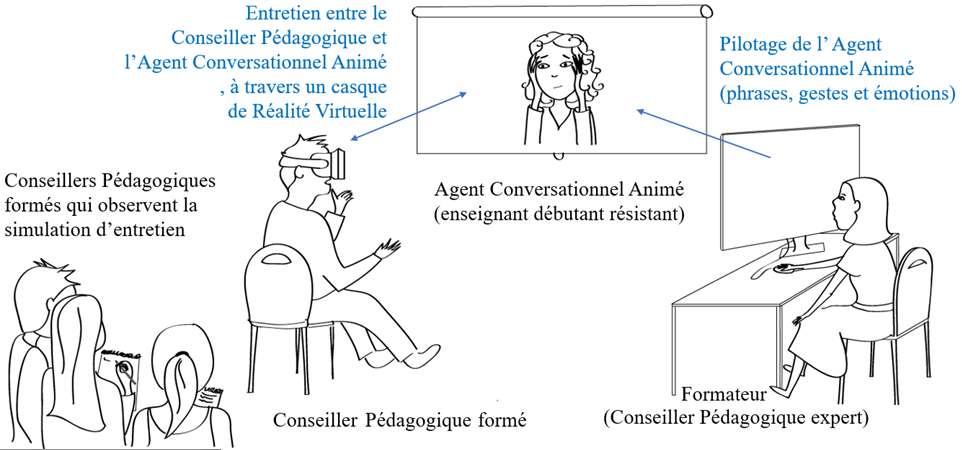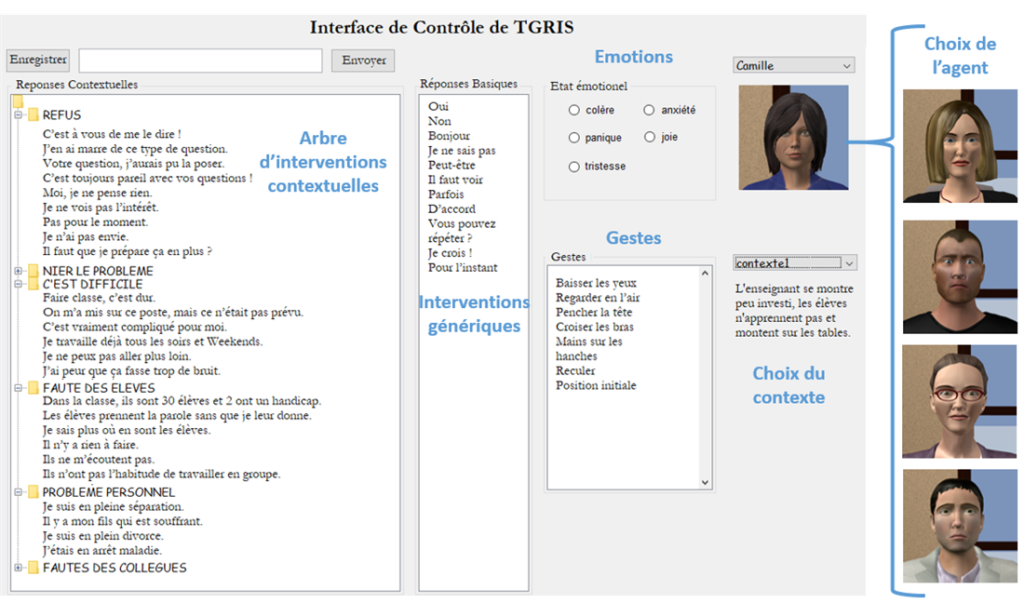Software: TGRIS-tool
Author(s): |  Iza Marfisi Iza Marfisi |
TGRIS : Teacher-Guided Realistic Interview Simulator
TGRIS is a Virtual Reality tool to simulate emotionally intense interviews.
The trained PC sits on a chair and talks directly to the ACA through a VR headset. Thanks to high performance headphones, he/she is completely cut off from the surroundings. Before starting the simulation, the teacher can choose a face for the ACA and the context of the interview (short introduction of the interview: the novice teacher does not seem invested in her role and the students climb on the tables). The other PCs observe the simulation and take part in the debriefing session right after.

During the simulation, the ACA’s reactions are triggers by the teacher in real time, via the control interface. The teacher can trigger the ACA’s verbal (sentences), non-verbal (e.g. cross arms, move back) responses and change its emotions (e.g. angry, anxious, sad). By default, the interface offers a set of generic sentences (e.g. yes, no, I don’t’ know) that can be used for any type of interview. TGRIS also allows the teachers to add their own reactions, specific to the situations they want to recreate and their pedagogical objectives. In our case, the PC’s selected a list of the problematic responses that can occur when starting a counseling session with novice teachers.
These sentences were grouped into six categories, represented in a tree. For example, the category refusal contains sentences such as “I’ve had enough of this type of question” or “You should tell me”. Some of these categories are associated to an emotion (anger for the refusal category). The teacher can either open the category and choose one of the sentences, or click on the category to trigger a random sentence. The teachers can also add their reactions (sentences, categories and associated emotions) in a text document but they can also add new sentences directly on the control interface.

TGRIS is built on the GRETA ACA platform. This platform has the specificity of offering a wide range of multi-modal emotions, combining the sound of the voice, facial expressions and body language. In addition, GRETA’s agents react to the sound of the voice by nodding their head and changing the direction of their gaze, hence giving the impression that they are listening.
More information about the TGRIS project : https://lium.univ-lemans.fr/tgris/

 Français
Français
